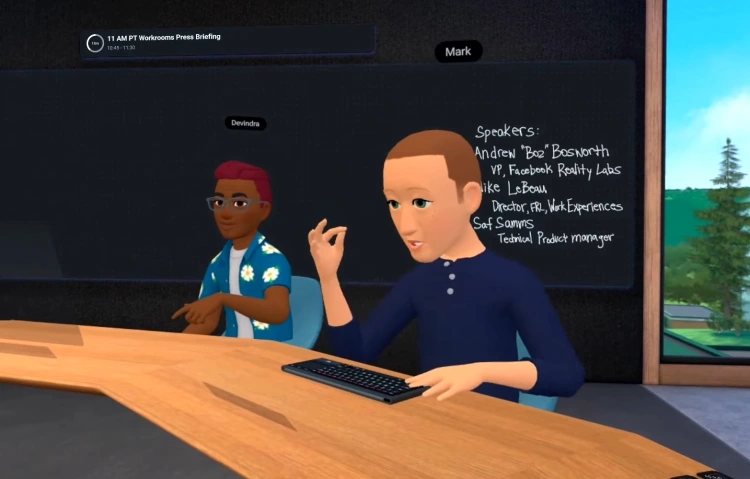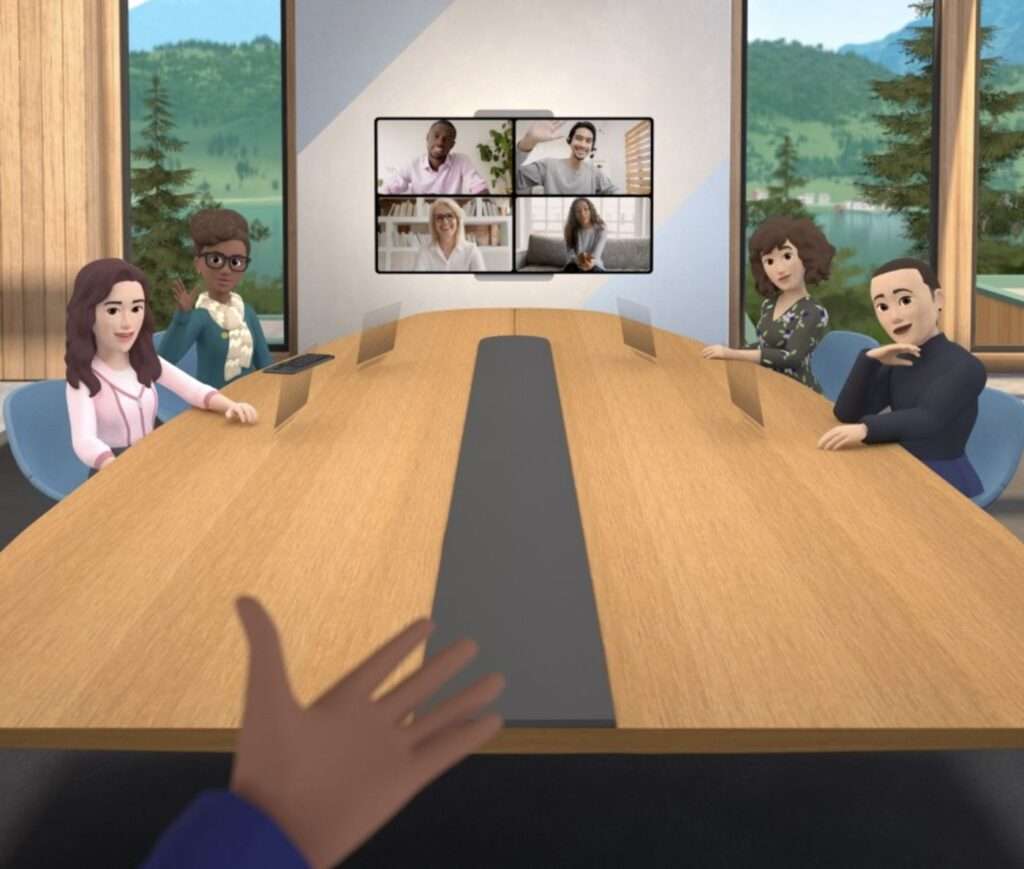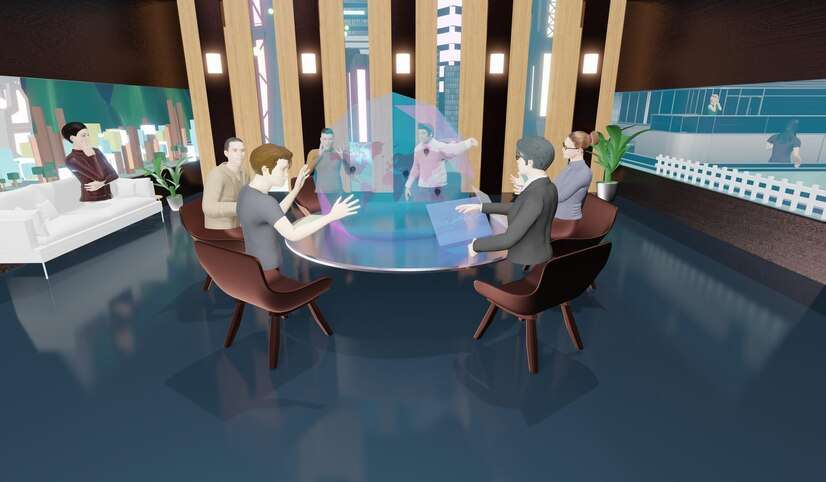In his end-of-year blog post, Bill Gates forecasted that within two to three years, the majority of Zoom meetings would move to the metaverse, a 3D place that can be accessed with an augmented reality (AR) headset and a digital avatar. According to Roshni Raveendhran, an assistant professor at the Darden School of Business at the University of Virginia, and Cathy Hackl, a futurist and metaverse expert, Bill Gates’ timeline may be a bit optimistic; they estimate that the metaverse could become the dominant virtual meeting site in approximately ten years. However, some businesses are ahead of the curve. Facebook and Microsoft have begun the transition with Horizon Workrooms and Mesh, respectively; Gates anticipates that enterprises outside of the technology sector will follow suit. “The notion is that you will someday utilize your avatar to meet with others in a virtual place that simulates being in a physical room with them,” wrote Gates. “For this, you will need VR [virtual reality] goggles and motion capture gloves in order to correctly record your facial expressions, body language, and voice quality.”
The transition will require employers to provide their staff with the necessary tools, which, as he admitted, may “delay adoption considerably.” He said, however, that the urge for social connection across a fragmented environment would drive the shift. “There is still work to be done,” said Gates. “However, we are nearing a tipping point when technology will begin to recreate the sensation of being in the workplace together.” According to a forecast published by PricewaterhouseCoopers in 2020, over 23 million occupations would utilize AR and VR for staff training, meetings, and customer support by 2030. Plus, Raveendhran said, “businesses have invested billions in virtual reality and augmented reality for years; it’s no wonder that VR is closer than anticipated.”

Zoom vs. Metaverse
In the early days of the epidemic, it was difficult enough to organize virtual meetings on platforms like Zoom, Google Meet, and Microsoft Teams. Bosses struggled with both abstract and specific concerns, such as the effectiveness of meetings with and without cameras and whether to subsidize workers’ internet subscriptions or pay for better equipment. Shifting to the metaverse is not likely to resolve any of these problems or provide many answers that are more evident. But having meetings on the whole new platform, which doesn’t need a camera, might still be a major step forward. Over the last two years, virtual meetings have been an indisputable boost to business, but mental tiredness from regular video talks, termed “Zoom fatigue,” has grown widespread, according to a study from Stanford University published in February 2021. Jeremy Bailenson, author of the study, noted, “If you want to indicate to someone that you agree with them, you must perform an exaggerated nod or put your thumbs up.” This increases the cognitive burden since it requires mental energy to communicate. And although the concept of bringing your VR avatar to the quarterly sales meeting may seem scary to the uninitiated, experts anticipate it will ease the strain. “We can imagine being there in that virtual area without having to worry about how we seem, how we behave, or how our backdrop appears,” says Raveendhran. We just need to be present. ” Hackl argues that employers do not need to require employees to pick avatars that reflect a real form; they may instead choose more imaginative representations, such as robots, that do not account for skin tone, hair color, or gender. She said, “This may be a way to help individuals feel more welcome or included in certain sessions.” “And with VR capabilities, individuals with varying talents will have access to new tasks or occupations.” There could be something there to uncover. ”
Both Raveendhran and Hackl noted that meetings that need deeper bonding or team building, such as new employee orientations or holiday celebrations, are better conducted in person. “Your corporation cannot provide you with a virtual drink,” remarked Hackl. Raveendhran compares the metaverse to an “improved, more present” telephone conversation. It enables individuals to be virtually present without sacrificing the psychological distance they may want. For instance, “if you need to have a delicate chat with your boss, virtual reality enables you to seem to be in the same room while maintaining psychological distance.” Hackl noted that leaders spend a great deal of time studying to become better communicators, especially through interpreting visual clues. “To learn how to interact with avatars, which lack human facial indications, you’ll have to train in a completely different manner if you conduct meetings in VR.” Hackl said that, unlike Zoom, metaverse meetings may have a limit on how long they may go. Even with the most capable VR equipment available today, Hackl says she has a 45-minute limit. I cannot imagine using a headset for a six-hour video chat. She said that future Metaverse sessions would be shorter and more focused on cooperation and co-creation, which are best done in an office-like atmosphere. Employers must not lose sight of psychological imperatives such as belonging and companionship, which are essential for a healthy workforce when a service such as the metaverse enables expanded parasocial ties.
Some employees may have found it comforting to see their colleagues’ faces on Zoom during an otherwise lonely day. “We would also need to be mindful of the headsets’ physical effects,” Raveendhran stated. “Such as whether it impairs our vision or affects our brain functioning; we do not know any of these things at this time, and we won’t know until there is a more consistent pattern of use.” Before adopting on a large scale, we must pay attention to a number of these factors. Looking ahead In spite of their promise, meetings in the metaverse may not be the solution to many leaders’ worries; after all, the majority of workplaces continue to be somewhat split between in-person and virtual dynamics. “A one-size-fits-all strategy will not work,” Raveendhran said. Some individuals will enjoy the metaverse, others will be satisfied with Zoom and won’t want additional technology, while some would prefer to meet in person and avoid both. Raveendhran remarked that regardless of where businesses land, their leaders’ openness to the notion will help them by demonstrating to their staff that they are not set in their ways. She added, “Subordinates see supervisors who are receptive to embracing new technologies as much more trustworthy and receptive.” “As we begin to examine the metaverse or any new technology, there is often hesitancy over whether adopting it would improve or alter a company’s culture, and there are certainly many factors to consider on both sides.” As the metaverse proliferates in the workplace, Hackl advised that executives who are contemplating joining it should employ “crypto natives” or gamers who are already familiar with virtual environments. She said, “This will become second nature to the younger generation.” However, not everyone will be comfortable with this, so leaders must be cognizant of this.
Ready to join the Metaverse? Don’t know how? We’ve got it down for you in our Explainer Guide.
Works Cited
Chodor, Ben. “Council Post: Meetings In The Metaverse: Is This The Future Of Events And Conferences?” Forbes, 12 Jan. 2022, www.forbes.com/sites/forbescommunicationscouncil/2022/01/13/meetings-in-the-metaverse-is-this-the-future-of-events-and-conferences.
“Leading a Metaverse Meeting 101.” Fortune, fortune.com/2021/12/14/metaverse-meetings-bill-gates-prediction. Accessed 18 Sept. 2022.










